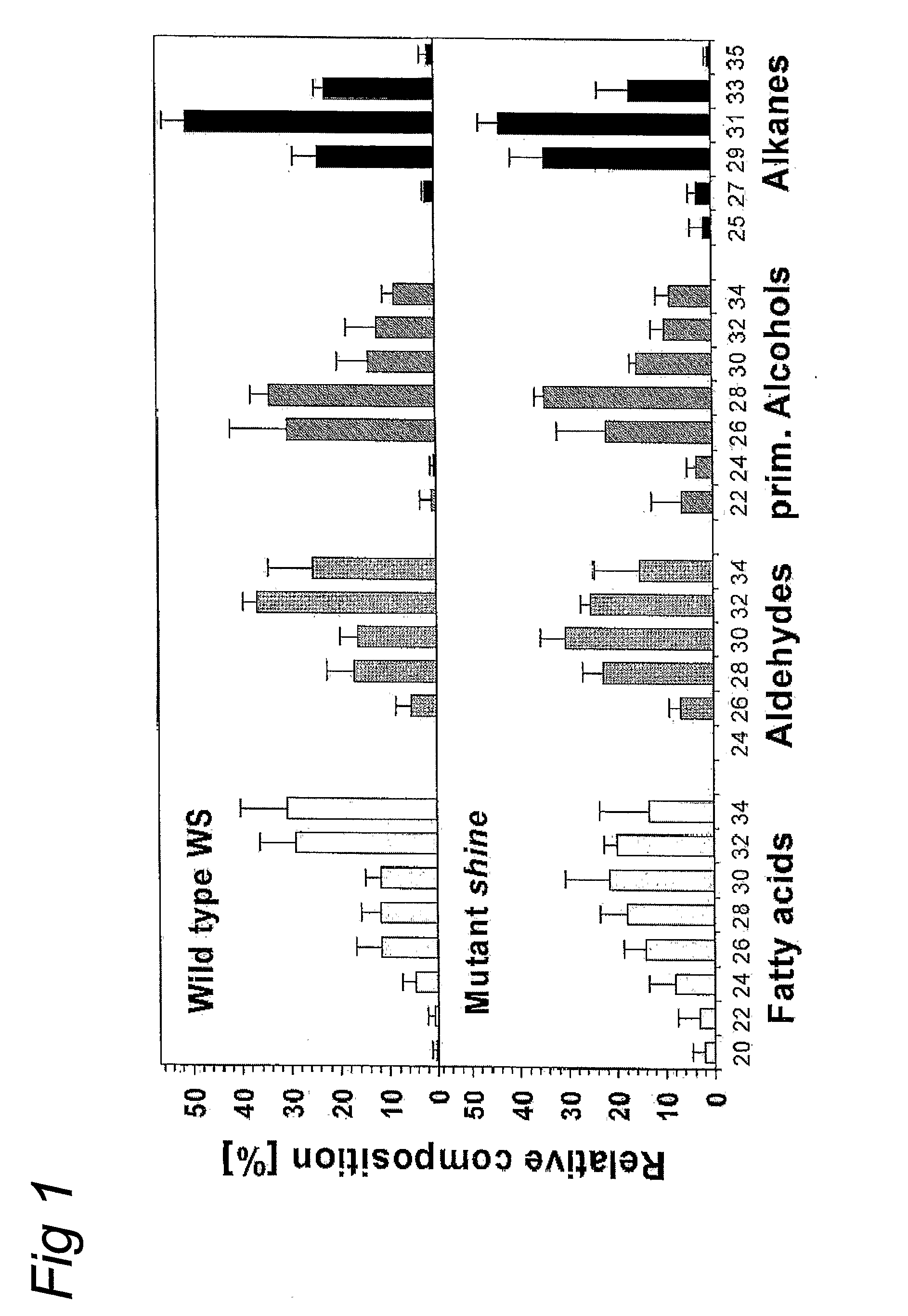Shine clade of transcription factors and their use
a transcription factor and clade technology, applied in the field of new transcription factor clade, can solve the problems of high cost, high labor intensity, and inability to meet the needs of a large number of people, and achieve the effect of reducing labor intensity, reducing labor intensity, and reducing labor intensity
- Summary
- Abstract
- Description
- Claims
- Application Information
AI Technical Summary
Benefits of technology
Problems solved by technology
Method used
Image
Examples
example 1
Material and Methods
1.1 Plant Material and Drought Tolerance Experiment
[0181]All plants, including the activation tag population (Marsch-Martinez et al., 2002, Plant Physiol. 129:1544-1556) and transgenic lines were grown in the greenhouse at around 22° C. and were in the Arabidopsis ecotype Wassilewskija (Ws). For the drought tolerance experiments, soil mixture comprised 1 part of sand and perlite and 2 parts of compost. Seeds were sown (after 3 nights at 4° C.) at density of six plants per 4 cm pot in a tray with 51 pots (Aracon containers, BetaTech, Belgium). Mineral nutrients were supplied 10 days after germination and at two weeks after germination the plants were subjected to drought (for 9, 10, 11 or 12 days) by transferring the pots to dry trays (after drying each pot from outside). Every 2 days in drought, the plants were moved within the tray to nullify pot position effects. Subsequently, plants were rehydrated and observed for recovery after one week. The drought experime...
example 2
Identification of the Shine Mutant
[0193]By screening a collection of 2000 Arabidopsis transposon activation tag lines (Marsch-Martinez et al., 2002) a mutant plant was identified which showed leaf surface alterations (not shown). Both rosette and cauline leaves of the mutant (termed shine, shn) had a more brilliant, shiny green color when compared to wild type plants and often had curved-down edges (not shown). The stem of mature plants was often bowed-down, siliques were slightly smaller than wild type and also showed a more brilliant surface. Structure of other floral organs and plant fertility did not seem to be affected in shn. Progeny analysis of the self-pollinated shn mutant line suggested a dominant mutation (three quarters of the plants exhibited the shn phenotype).
example 3
Alterations to Wax Load in the shn Mutant
[0194]Scanning electron microscopy (SEM) was utilized for a detailed comparison between the surfaces of wild type plant organs and those of shn. The surfaces of stems and siliques of Arabidopsis are covered by a dense mixture of different types of wax crystals while leaf surfaces normally exhibit only small numbers of epicuticular wax crystals. In contrast to wild type we detected more wax crystals on both adaxial and abaxial sides of rosette and cauline leaves of shn (data not shown). The leaf surface was not entirely covered by crystals, as in the case of wild type siliques and stems, but rather had irregular patches of plate-like wax crystals. An additional characteristic of the shn mutant was the presence of cuticular ridges on the surface of both cauline leaves and siliques, which were not detected in the wild type (data not shown). Such cuticular ornamentation was not visible on either the adaxial or abaxial surfaces of shn rosette leav...
PUM
 Login to View More
Login to View More Abstract
Description
Claims
Application Information
 Login to View More
Login to View More - R&D
- Intellectual Property
- Life Sciences
- Materials
- Tech Scout
- Unparalleled Data Quality
- Higher Quality Content
- 60% Fewer Hallucinations
Browse by: Latest US Patents, China's latest patents, Technical Efficacy Thesaurus, Application Domain, Technology Topic, Popular Technical Reports.
© 2025 PatSnap. All rights reserved.Legal|Privacy policy|Modern Slavery Act Transparency Statement|Sitemap|About US| Contact US: help@patsnap.com



